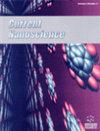Surface-Enhanced Raman Scattering: A Promising Nanotechnology for Anti-Counterfeiting and Tracking Systems
IF 1.5
4区 材料科学
Q4 BIOTECHNOLOGY & APPLIED MICROBIOLOGY
引用次数: 1
Abstract
Abstract: Surface-enhanced Raman Scattering (SERS) is a sensing method based on inelastic scattering of a laser beam by a reporter molecule absorbed on a plasmonic substrate. The incident laser beam induces a localized-surface plasmon resonance in the substrate, which generates an oscillating electromagnetic field on the substrate dielectric surface. Under the influence of this field, the reporter molecule absorbed on the plasmonic substrate starts to vibrate, causing inelastic scattering of the laser beam. The laser-induced electromagnetic field is also the main contributor to the enhancement observed in the intensity of the scattered light. Plasmonic substrates are nanostructured surfaces often made of noble metals. The surface enhancement of a plasmonic substrate is determined primarily by factors related to the substrate’s nano-architecture and its composition. SERS-based labeling has emerged as a reliable and sophisticated anti-counterfeiting technology with potential applications in a wide range of industries. This technology is based on detecting the SERS signals produced by SERS tags using Raman spectroscopy. SERS tags are generally made of a plasmonic substrate, a Raman reporter, and a protective coating shell. They can be engineered using a wide variety of materials and methods. Several SERS-based anticounterfeiting labels have been developed in the past two decades. Some of these labels have been successfully combined with identification systems based on artificial intelligence. The purpose of this review is to shed light on the SERS technology and the progress that has been achieved in the SERS-based tracking systems.表面增强拉曼散射:用于防伪和跟踪系统的有前途的纳米技术
摘要:表面增强拉曼散射(Surface-enhanced Raman Scattering, SERS)是一种利用等离子体基板上吸收的报告分子对激光束进行非弹性散射的传感方法。入射的激光束在衬底中产生局域表面等离子体共振,在衬底介质表面产生振荡电磁场。在该场的作用下,吸收在等离子体基板上的报告分子开始振动,引起激光束的非弹性散射。激光诱导的电磁场也是散射光强度增强的主要原因。等离子体衬底是纳米结构的表面,通常由贵金属制成。等离子体衬底的表面增强主要取决于衬底的纳米结构及其组成。基于sers的标签已经成为一种可靠和复杂的防伪技术,在广泛的行业中具有潜在的应用。该技术是基于使用拉曼光谱检测SERS标签产生的SERS信号。SERS标签通常由等离子基板、拉曼报告膜和保护涂层壳组成。它们可以使用各种各样的材料和方法来设计。在过去的二十年里,已经开发出了几种基于sers的防伪标签。其中一些标签已经成功地与基于人工智能的识别系统相结合。本综述的目的是阐明SERS技术及其在基于SERS的跟踪系统中取得的进展。
本文章由计算机程序翻译,如有差异,请以英文原文为准。
求助全文
约1分钟内获得全文
求助全文
来源期刊

Current Nanoscience
工程技术-材料科学:综合
CiteScore
3.50
自引率
6.70%
发文量
83
审稿时长
4.4 months
期刊介绍:
Current Nanoscience publishes (a) Authoritative/Mini Reviews, and (b) Original Research and Highlights written by experts covering the most recent advances in nanoscience and nanotechnology. All aspects of the field are represented including nano-structures, nano-bubbles, nano-droplets and nanofluids. Applications of nanoscience in physics, material science, chemistry, synthesis, environmental science, electronics, biomedical nanotechnology, biomedical engineering, biotechnology, medicine and pharmaceuticals are also covered. The journal is essential to all researches involved in nanoscience and its applied and fundamental areas of science, chemistry, physics, material science, engineering and medicine.
Current Nanoscience also welcomes submissions on the following topics of Nanoscience and Nanotechnology:
Nanoelectronics and photonics
Advanced Nanomaterials
Nanofabrication and measurement
Nanobiotechnology and nanomedicine
Nanotechnology for energy
Sensors and actuator
Computational nanoscience and technology.
 求助内容:
求助内容: 应助结果提醒方式:
应助结果提醒方式:


